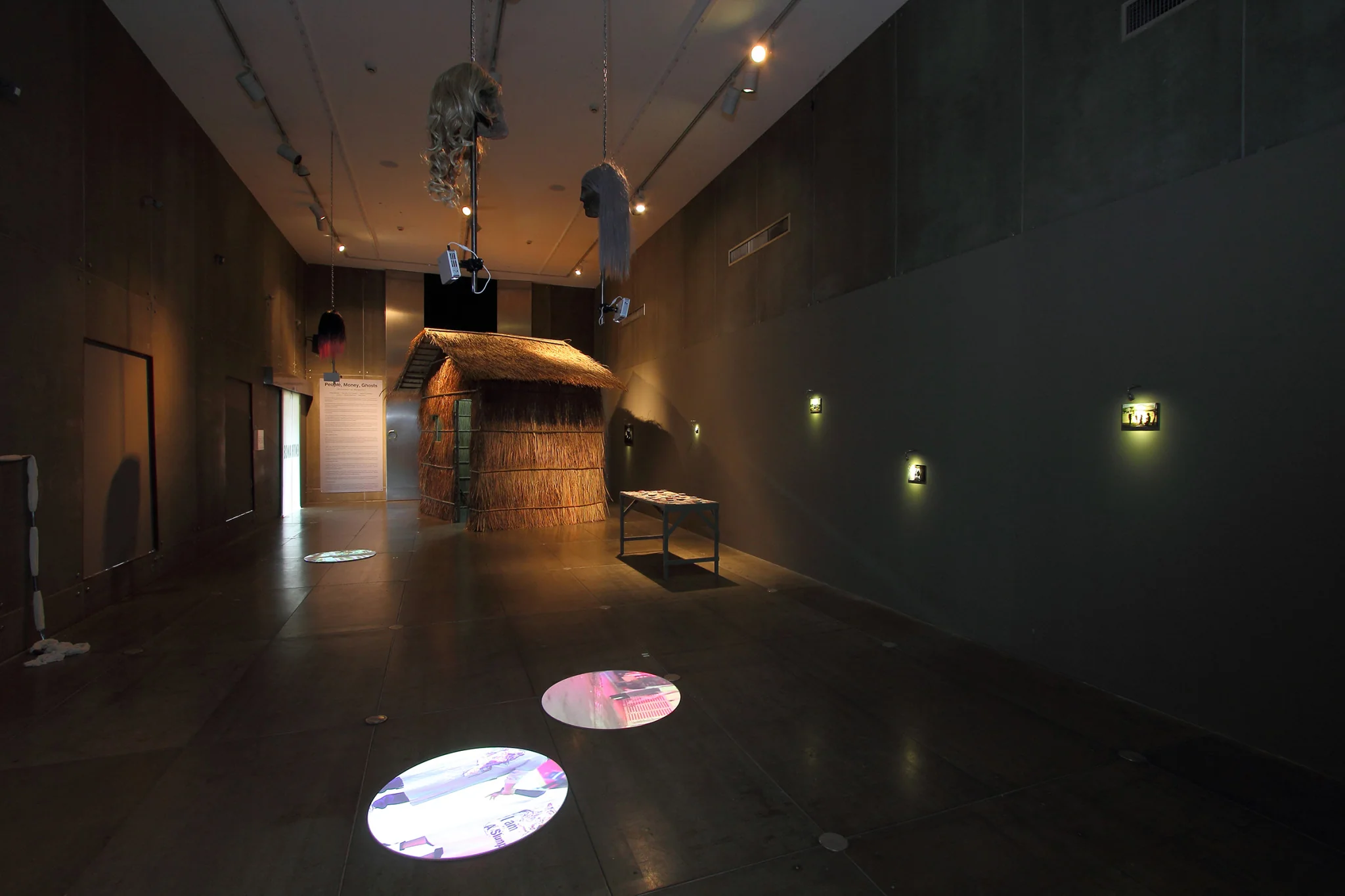

Exhibitions / Jim Thompson Art Center
EN THPeople,
Money,
Ghosts
(Movement as Metaphor)
People, Money, Ghosts (Movement as Metaphor) explores how the travel and migration of populations and industries, ideas and spiritual beliefs, aesthetics and technologies, and artists themselves are continually remaking our world—within and beyond the region we call Southeast Asia—and how this is manifested in the practices of the exhibiting artists. That is, the exhibition is about the process of movement itself as the hinge on which the works turn, rather than about questions that can be said to inhere in any single location. All of the exhibited works were created not in the artists’ ‘home’ cities, but rather in distant sites charged with locally-specific meanings, both historical and contemporary.
A group exhibition featuring
Khvay Samnang (based in Phnom Penh)
Amy Lien & Enzo Camacho
(based in Manila, Berlin and New York)
Nguyen Thi Thanh Mai (based in Hue)
Curated by
Roger Nelson (based in Phnom Penh)
The works in the exhibition consider movement both as an experience, and as an object of artistic research. Each of the artists have chosen questions and concerns relating to the displacement of people, the shifts in foreign capital, and their haunting after-effects as historical traces in contemporary locations. These sites of interest mirror the artists’ own experiences of movement and processes of working.
People, Money, Ghosts (Movement as Metaphor)is an exhibition which asks if we can imagine and make sense of a world in perpetual flux, an endlessly reconfiguring constellation of moving parts, a conflagration of swirling forces and forms than cannot be apprehended from any single viewpoint.
Shifts between locations and movements through space become central motifs in the practices of these artists for whom regular relocation has become a necessary circumstance. These artists offer a way of seeing this region as a dynamic network of inter-relationships that are constantly being reconfigured, and that hungrily hop across national borders within Southeast Asia, and across the imaginary boundaries of the region itself.
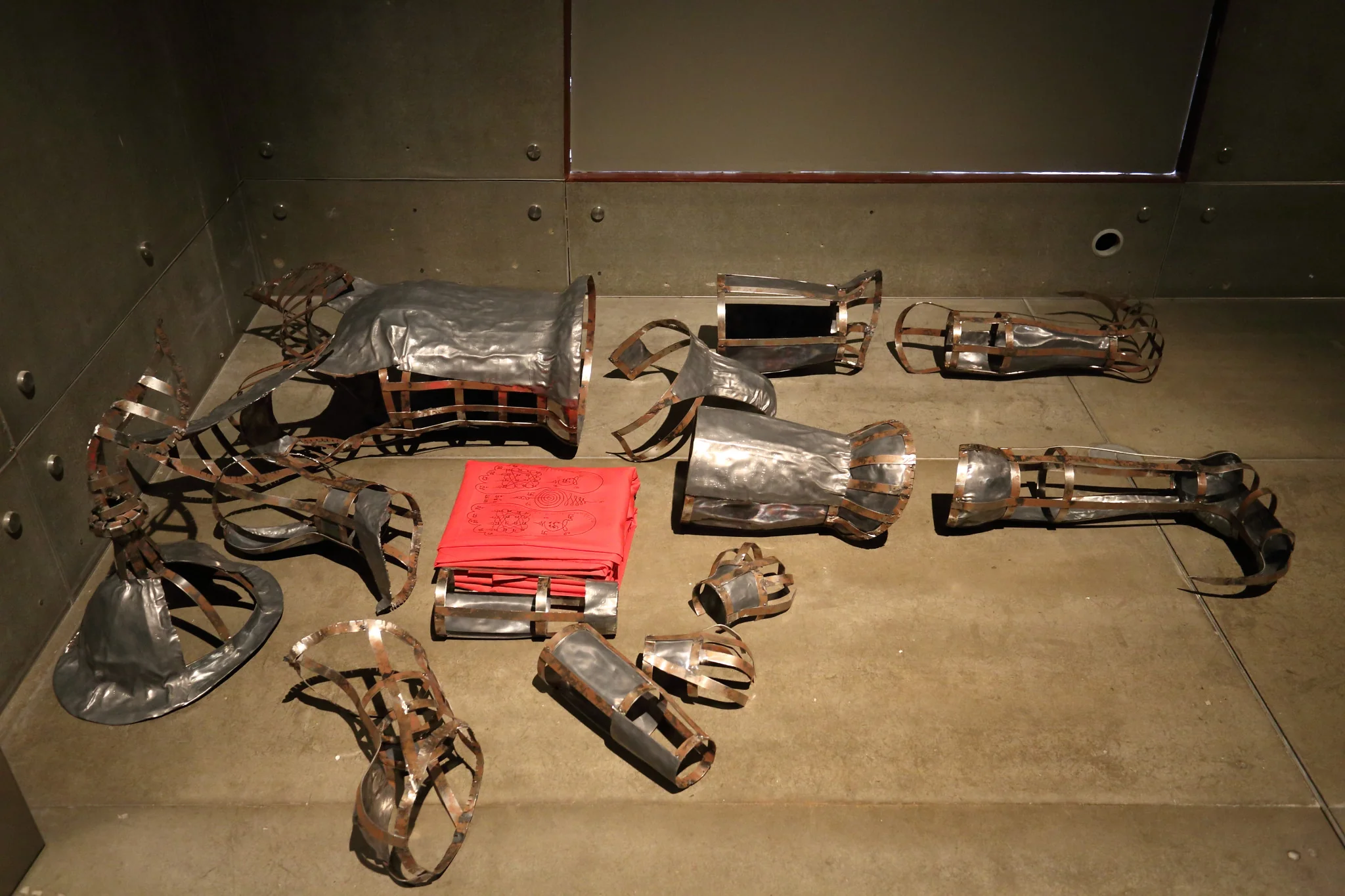
Two projects by Khvay Samnang explore movement in expanded Cambodian contexts. Yantra Man (2015), originally exhibited at KunstlerhausBethanien in Berlin in 2015, explores the largely forgotten history of Cambodian soldiers sent to fight for France in World War 1. Consisting of metal sculptures and installation, with the protective amulets and designs of the Khmer yantraas a recurring motif, the work considers resonances between the soldiers’ historical experiences, and the contemporary experience of working from home. Rubber Man (2014) consists of a single-channel video of a performance by the artist, and an installation comprising of wooden sculptures presented on richly fertile red soil, like that found in the Rattanakiri province of northern Cambodia. The work explores the environmental, social and spiritual effects of the rubber plantations in this region.
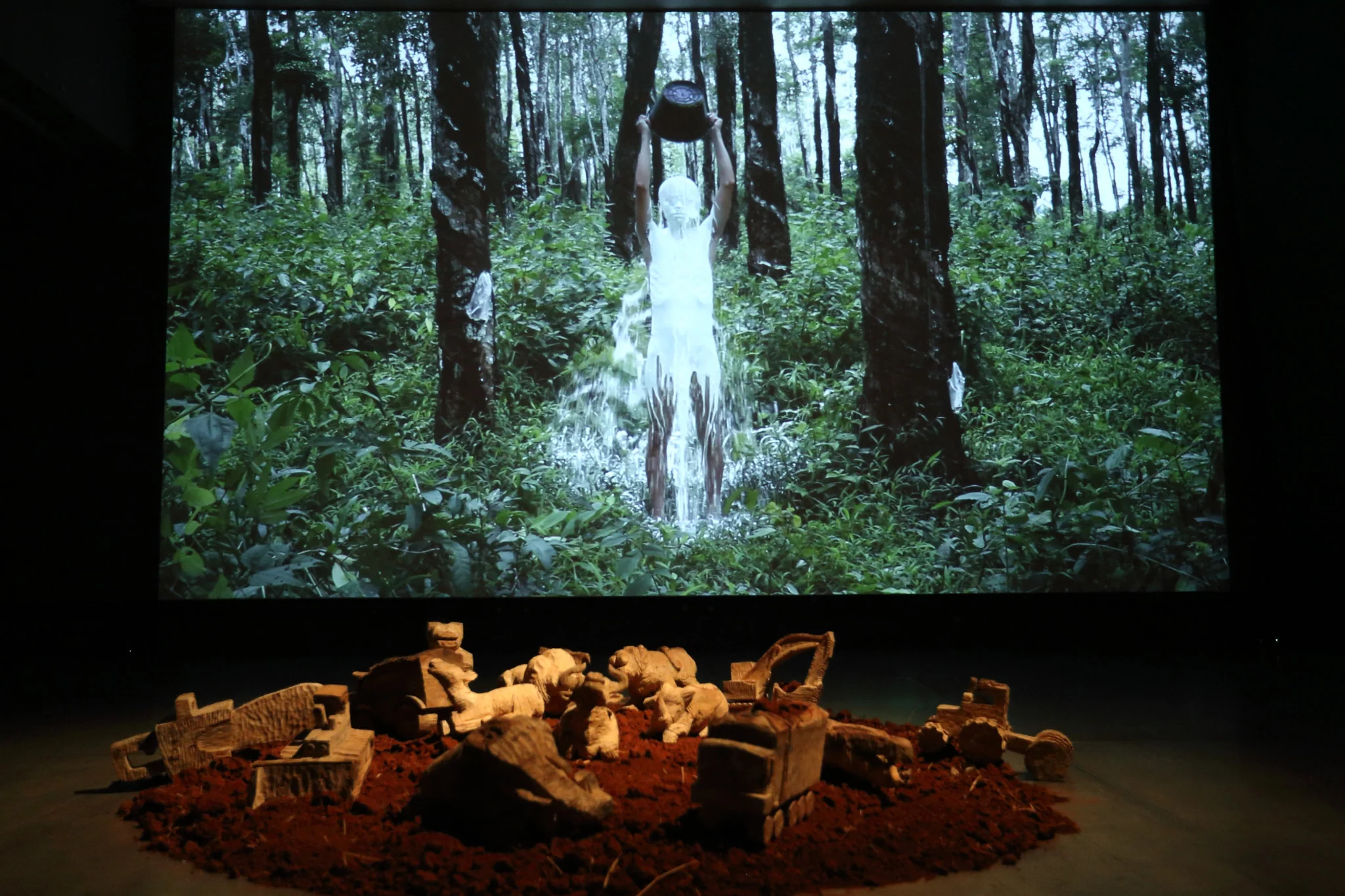
Rubber Man (2014)
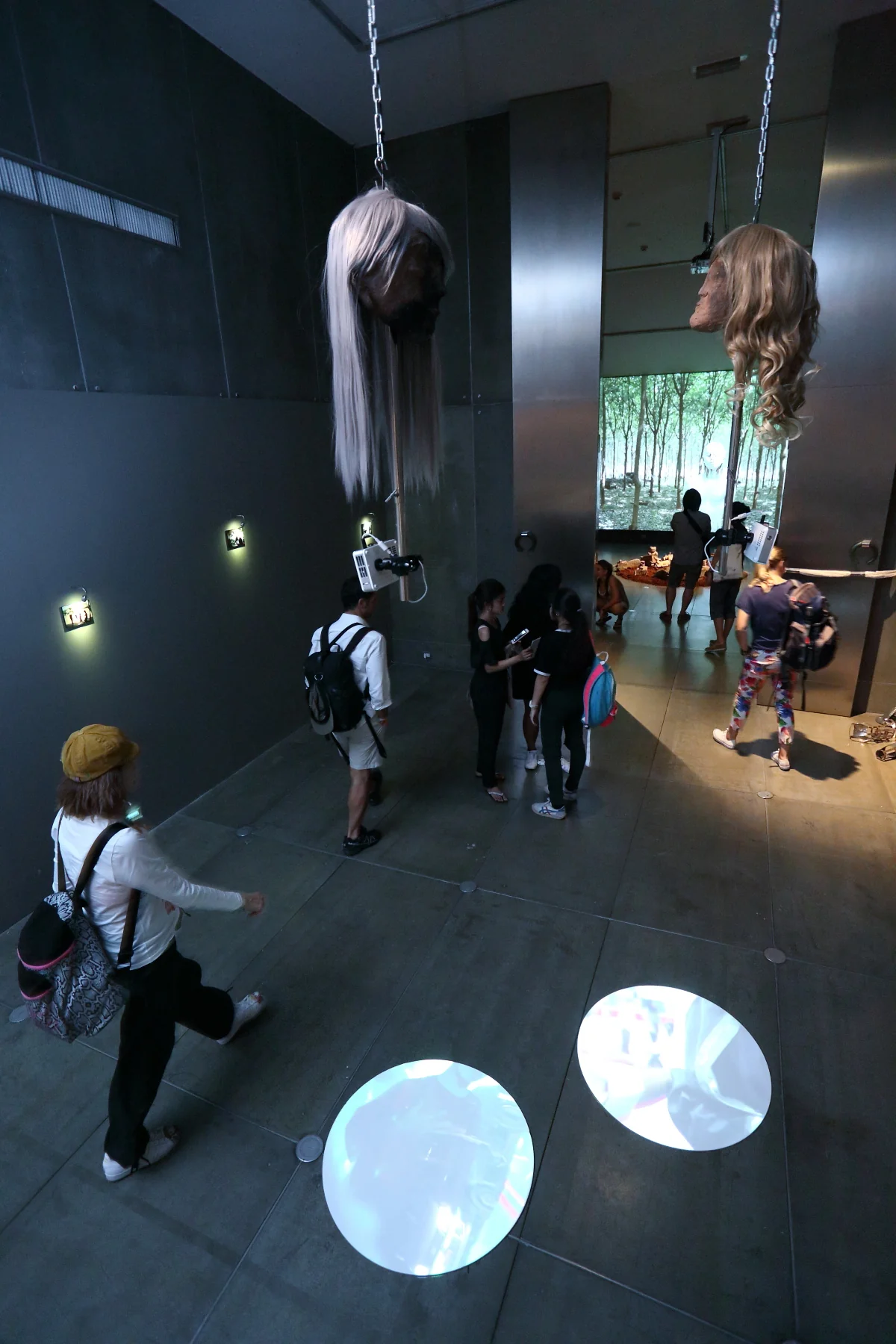
Amy Lien & Enzo Camacho are a collaborating duo, who present a new series comprising objects they term ‘video sculptures.’ These explore the figure of a kind of ghost found in locations throughout Southeast Asia: a mythical creature which self-segments, leaving its legs in the (literal or metaphorical) forest while its head and torso flies through the city to terrorize its inhabitants. In Thailand this creature is called akrasue, and in Cambodia it is an arb. The starting point for the artists’ interest in this mutant and mutating figure was the Philippine manananggal,and the krasue/arb/manananggalis here proposed by the artists as a poetically resonant symbol of an ever-shifting sense of self: one without a fixed centre, one that perpetually migrates rather than having a ‘home,’ one that resists rational categorization. This is ‘an open-source monster,’ the artists suggest, borrowing the vocabulary of collaborative and user-generated software.
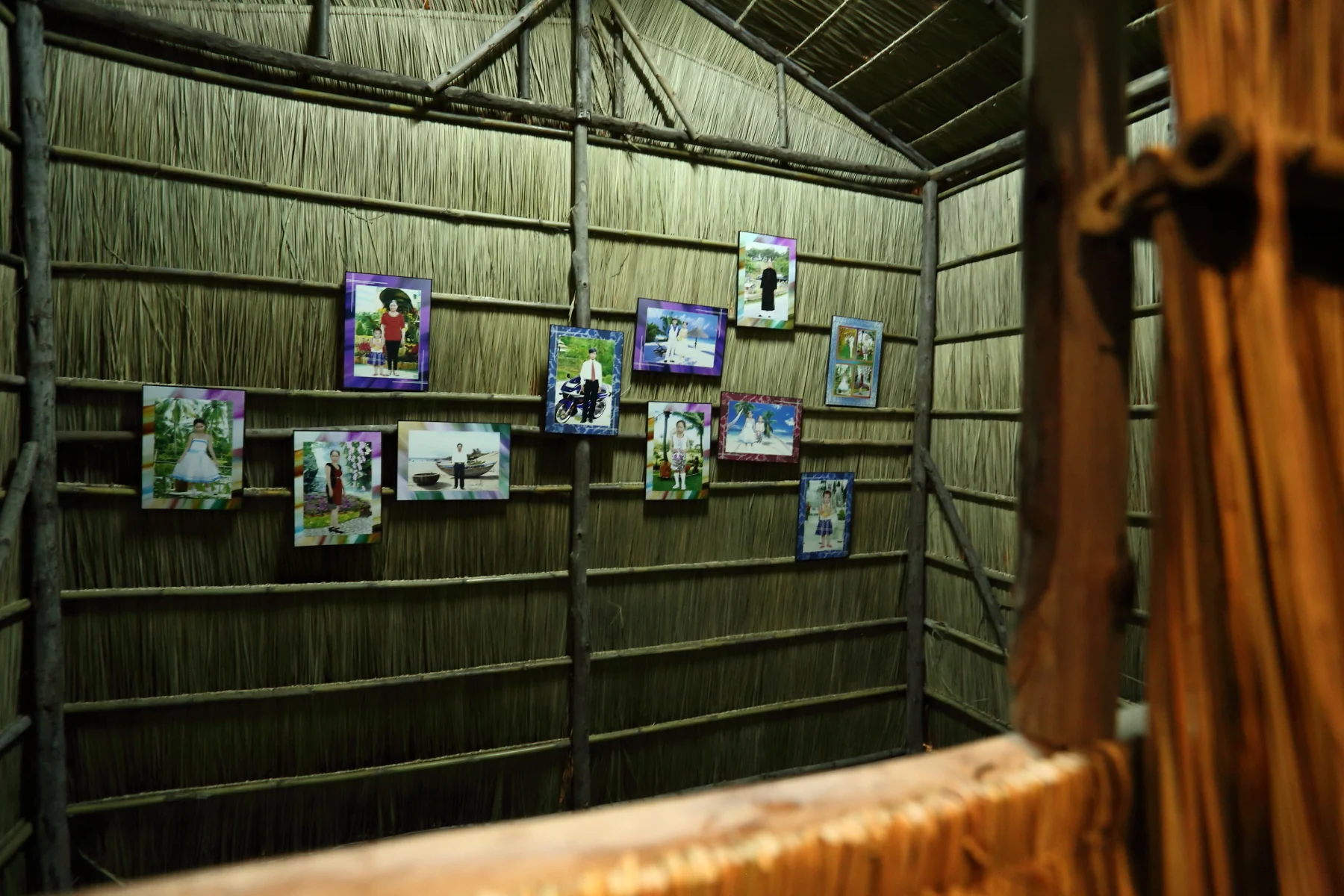

Day by Day (2014-7) by Nguyen Thi Thanh Mai explores the experience of stateless Vietnamese migrant communities living in floating villages in Cambodia and in Vietnam. These communities have faced decades of hardship, including persecution during the American War in Vietnam and the Khmer Rouge in Cambodia, and continue to be denied many human rights including basic education and healthcare, as a result of being unable to obtain legal identification documents from either nation. The project consists of a one-hour video, a participatory installation of false ‘identity cards,’ and a series of collaborative digital photographic collages installed inside a small hut constructed in the gallery space from coconut-leaf thatching.
Each of these works have the potential to resonate with charged contemporary circumstances and submerged historical narratives in Thailand. Many artists working in Thailand adopt a migratory and nomadic practice, and implicitly propose the liberating potentials of a sense of pan-regional Southeast Asian experience, rather than nationally delimited identity.
The exhibition People, Money, Ghosts (Movement as Metaphor) features the artists Khvay Samnang, Amy Lien & Enzo Camacho, and Nguyen Thi Thanh Mai, and is curated by Roger Nelson.
Roger Nelson
based in Phnom Penh
Curator
Roger Nelson is an art historian and independent curator based in Phnom Penh, and is currently completing his PhD candidature at the University of Melbourne. His research centres on questions of modernity and contemporaneity in art, taking Cambodia and the broader region as case studies. Roger is a co-founding co-editor of the new scholarly journal, Southeast of Now: Directions in Contemporary and Modern Art in Asia, published by NUS Press at the National University of Singapore. He has contributed essays to scholarly journals including Stedelijk Studies, specialist art magazines including ArtAsiaPacific, as well as books and numerous exhibition catalogues. Roger has curated exhibitions and other projects in Australia, Cambodia, Singapore, Thailand and Vietnam.
Nguyen Thi Thanh
based in Hue
Artist
Nguyen Thi Thanh Mai (born 1983, based in Hue) explains that “the notion of struggle and an attention to difficult and repressed feelings are central to my practice.” She works across multiple media, exploring challenges faced by individuals and communities, through a process of long-term immersive research. Initially gaining attention for works engaging women’s bodies and gender-based experiences, her ongoing work in stateless fishing communities in Vietnam and Cambodia intersects with issues of citizenship, and histories of the American War in Indochina.
Amy Lien and Enzo Camacho
based in Manila and New York
Artists
Amy Lien (born 1987, based in Manila and New York) and Enzo Camacho (born 1985, based in Manila and Berlin) are a duo who have worked exclusively in collaboration since 2009. Their works, which they wryly describe as “not so medium-specific,” often include video and installations that mimic the aesthetics of online and nocturnal environments. Drawn to liminal circumstances—figures between genders, activities between leisure and labour, works between affect and irony
Khvay Samnang
based in Phnom Penh
Artist
Khvay Samnang (born 1982, based in Phnom Penh) is one of Cambodia’s most prominent visual artists. He works in performance, photography, video, and installation, and is especially interested in exploring contentious political issues, social and cultural transformations, and historical narratives in Cambodia and beyond. “How can we show something, if we cannot say it?,”